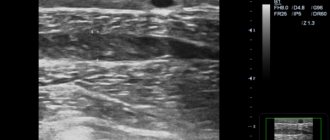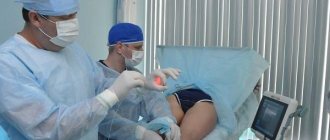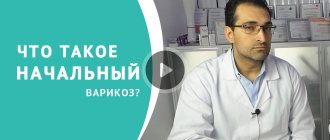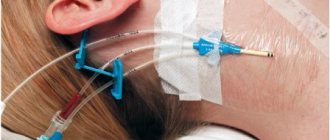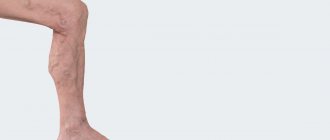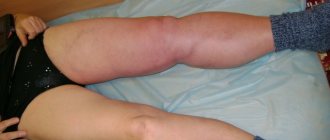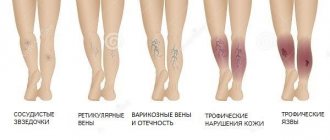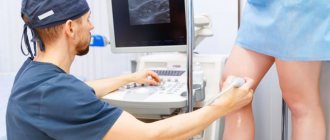Sclerotherapy (scleroobliteration) of veins is a modern method of treating varicose veins, based on the introduction of special chemicals (sclerosants) into the lumen of the vessel, causing gluing of the walls and subsequent resorption of the vein. The technique is aesthetic, since without incisions or scars it allows you to fight various manifestations of varicose veins.
History of the method of sclerotherapy (scleroobliteration) of veins
The first mentions date back to the period of antiquity. The works of Hippocrates describe a method of obliterating a vein using a metal rod. An artificial inflammation was induced, then the vein was punctured with an oriental plane tree thorn. The first documented experiments on the injection of solutions into a vein were carried out by Christopher Wren (a mathematician and architect from Oxford) in 1656. The pioneer of sclerotherapy in 1682 was D. Zollikofer (Swiss doctor). Using acid, he tried to cause vein thrombosis.
Dr. C. Pravaz – inventor of the syringe
In 1851, C. Pravaz (a French surgeon) invented a syringe and sclerosed arterial aneurysms with its help. The first procedure in a form close to the modern one (iron perchloride was injected) was reported by Debout and Chassaignac in 1853. Due to the large number of complications accompanying sclerotherapy, the method was given a negative assessment at the congress of surgeons held in Lyon in 1893. At the beginning of the 20th century, Jean Sica injected sodium salicylate into veins, and later sodium carbonate and founded the “French” technique of sclerotherapy.
The discovery of detergents in the 1930s (an effect based on damage to proteins in the inner wall of the vein) marked the beginning of a new chapter in the history of sclerotherapy. Tetradecyl sulfate was invented in 1946, and polidocanol in 1950. Their introduction into practice allowed the technique to become widespread. In the mid-1950s, K. Sigg proposed a “bottom-up” technique (Swedish). In 1960, D. Fegan published work based on successful treatment in 13 thousand patients. In it, he formulated the main postulates of modern sclerotherapy.
Syringe system for foam sclerotherapy according to L. Tissari
The foam block technique, proposed by K. Sigg back in 1949, became widespread in 2000 after the introduction of a three-way valve by L. Tessari (production of high-quality fine foam). The widespread introduction of ultrasound diagnostics made it possible to introduce echo-assisted interventions, which made it possible to carry out stem sclerotherapy and scleroobliteration of perforating veins.
Sclerotherapy (scleroobliteration) of veins - what is it
The essence of the technique is the effect of a special chemical substance (sclerosant) on the inner wall of the vein (intima), which ultimately leads to its gluing and complete elimination.
The following requirements apply to sclerosants:
- The effect should only be at a certain concentration, below which the drug has no effect.
- The effect of the drug on the venous wall is only after prolonged contact with it (areas with stagnation of blood, healthy veins are not damaged).
- The drug must be strong enough to sclerosis even large veins, but without damaging the tissue surrounding the vessels.
- Do not cause allergies.
- Do not cause pain when inserted, do not cause pigmentation or scarring of the skin.
- Be highly soluble in saline.
Types of sclerosants for vein sclerosis
Currently, the following groups of drugs are used in the world for the purpose of sclerosis:
- Detergents, which are fatty (carboxylic) acids and fats. These include: sodium morruate, ethanolamine oleate, tetradecyl sulfate, polidocanol, glycerin.
- Hypertonic and ionic solutions: hypertonic sodium chloride solution (20 and 23.4%); sclerodex – a mixture of 25% dextrose; 10% NaCl with a small amount of 2-phenylethanol; ionized iodine (variglobin).
- Cellular toxins.
The most widely used drugs are the detergent group.
Tetradecyl sulfate (Fibro-vane)
Their action is based on the extraction and denaturation of endothelial membrane proteins of the venous wall. This leads to delayed cell death and obliteration of the vein. The detergent only affects the pathologically altered vein, since the natural blood flow dissolves it to a safe concentration. Thus, only varicose veins with slow blood flow are exposed to chemical effects, healthy ones are not damaged. Unlike other sclerosants, detergents do not cause destruction of blood cells (hemolysis) and intravascular coagulation aggregation (clotting). These qualities determined the leading position of these drugs in sclerotherapy.
Polidocanol (Ethoxysclerol)
In Russia, only drugs from the detergent group are approved for use: polidocanol (ethoxysclerol) and tetradecyl sulfate (fiberwein). Another advantage of these sclerosants is the possibility of using a foam form of the drug.
Historical reference
The use of sclerotherapy
as a method of treating varicose veins dates back more than 100 years.
The first mention of sclerotherapy dates back to 1682: it was then that Dr. Zolikofer introduced acid into the lumen of the vein to form thrombosis. Scientists Debout and Cassagnac published their research materials in 1853, which provided data on the successful treatment of varicose veins
using iron perchlorate.
The scientist Desgrange in 1860 used iodine and tannin to treat varicose veins
in 16 patients.
However, all methods of using sclerosing agents to treat varicose veins
had side effects at the time, allowing surgical treatment to take precedence over
sclerotherapy
.
Only at the beginning of the 20th century new data appeared on the successful treatment of varicose veins
with mercury-based drugs, but these publications did not influence the development
of sclerotherapy
.
In 1946, the drug tetradecyl sulfate (fiberwein) was discovered, which is currently successfully used in sclerotherapy
.
New rise of sclerotherapy
experiences in 1960 when scientist George Fegan reports successful
treatment of varicose veins
in 13,000 patients.
Fegan outlined the basic principles of successful sclerotherapy
: precise injection of the drug into the lumen of the vein, sufficient contact time of the drug with the vein wall, mandatory subsequent compression with elastic materials.
The technique of vein sclerosis
is being adopted by medical communities in leading European countries.
treatment of varicose veins gradually began to improve
and other vascular diseases.
In particular, the duplex angioscanning technique began to be used not only for diagnosing vascular diseases - with its help it became possible to control the administration of sclerosant, as well as evaluate the effectiveness of the therapy. Scientists Knight and Thibault studied the possibility of
ultrasound-guided
sclerotherapy echosclerotherapy
), and the research of the founders of the
foam sclerotherapy
, Cabrera and Monfro, became the basis for modern
sclerotherapy
.
Types of sclerotherapy (scleroobliteration) of the veins of the lower extremities
- Microsclerotherapy of telangiectasia. The drug is administered in liquid form into vessels with a diameter of up to 1 mm: polidocanol (concentration 0.25-0.75%), tetradecyl sulfate (0.1-0.2%).
- Microsclerotherapy and microfoam (foam-form) sclerotherapy for venulectasias (1-2 mm) and reticular veins (2-4 mm). The foam form of the drug is used: polidocanol (0.5-1%), tetradecyl sulfate (0.25-0.4%).
Foam sclerotherapy Foam-form small veins and spider veins
- Echo-guided sclerotherapy: great and small saphenous veins, tributaries of the great veins, perforating veins. Only the foam form of sclerosant is used in a high concentration of 3% for polidocanol and 1-3% for tetradecyl sulfate.
Foam sclerotherapy (scleroobliteration) of veins under ultrasound guidance
Reasons for the development of the disease
Experts say the main cause of spider veins is hormonal imbalance in the body. In addition, they can develop with problems with the heart or blood vessels and pathology of other organs.
Fact! Genetic predisposition also plays a very important role. Therefore, if one of your relatives already suffers from varicose veins, then you should lead a healthy lifestyle, monitor your diet and physical activity to reduce the risk of developing the disease.
Indications for sclerotherapy (scleroobliteration) of veins
Any varicose vein can be successfully treated with endovenous chemical obliteration. The emergence and availability of modern minimally invasive methods of thermoobliteration (EVLO, RFO) has somewhat narrowed the range of applications of sclerotherapy (scleroobliteration) of veins in Moscow. But it remains still relevant, and sometimes irreplaceable.
Most often the indications are as follows:
- The presence of reticular varicose veins and telangiectasias is often an aesthetic problem; sometimes bleeding from these vessels is indicated.
- Isolated varicose veins of the tributaries of the small or great saphenous veins.
- The presence of pathological reflux in the perforating veins, after its elimination in the main ones.
- If other treatment methods are contraindicated for patients with the stem form of varicose veins. It has been proven that the intervention is effective even when the diameter of the ostial valve of the great saphenous vein is up to 30 mm.
Contraindications for sclerotherapy (scleroobliteration) of veins
Like every treatment method, sclerotherapy has contraindications.
Absolute:
- Cardiopulmonary failure.
- Allergy to sclerosant.
- Thrombosis of deep and superficial veins.
- Thrombophilia.
- Pregnancy and lactation period.
- Inflammatory processes in the procedure area.
- Sedentary patients.
- Open oval window in the heart (for foam form).
- If varicose veins are the only route of blood outflow from the lower extremities (10% PTF).
Relative:
- Hormonal therapy.
- Proximity to long flights.
- Ischemia of the lower extremities.
- Obesity and lymphostasis.
Technique for sclerotherapy (scleroobliteration) of veins
The sclerotherapy technique is non-traumatic and does not require hospitalization or changes in the usual rhythm of life, and is well tolerated by patients.
One-handed sclerotherapy technique
The session is performed in a horizontal position. Sometimes it is necessary to create an elevated position of the limb. Injections are performed with the thinnest 27-30G needles, so they are practically not felt by patients. After treating the skin with an antiseptic solution, sclerosant is injected into the lumen of the veins. Depending on the caliber of the vessels and their location, a liquid or foam form of one concentration or another is used. The introduction is carried out slowly to avoid stretching and rupture of the vessel. For additional visualization, ultrasound guidance or a venovisor can be used.
Use of modern methods of vein visualization
After the injections, bandages are applied to the skin along the veins, and class 1 or 2 compression hosiery is worn.
How does the procedure work?
Sclerotherapy is a procedure that does not require special preparation and causes virtually no discomfort to the patient. The drug is administered using very thin needles, so the injection does not cause discomfort.
Usually, to obtain a pronounced effect, it is necessary to do several procedures - from 3 to 5. A lasting result is only possible if you wear compression hosiery after sclerotherapy, which puts the correct pressure on the veins and maintains the result. If all the doctors’ recommendations are fully followed, the vein remains sclerotic forever.
Recommendations after a session of sclerotherapy (scleroobliteration) of veins
The length of time to wear knitwear is determined by the diameter of the sclerosed veins. At the end of the session, the patient is shown walking for 15-20 minutes, and subsequently, every day, patients must perform certain exercises for the lower extremities. Walking, cycling and light aerobics are ideal exercises after sclerotherapy.
There are also limitations during the course of treatment, namely:
- visiting baths, saunas;
- long-term static loads;
- sunbathing;
- long flights (a week after the session);
- hair removal (week after the session).
Modern methods of treatment
Several types of sclerotherapy have been developed:
- Injection (compression) sclerotherapy, in which a sclerosant is injected into a vein with a very thin needle, and a compression bandage is applied to the limb, resulting in the closure of the venous walls.
- Foam sclerotherapy is the most effective method, where a foaming composition is used as an adhesive, which spreads evenly throughout the vein.
- Microsclerotherapy is used to remove spider veins.
- ECHO sclerotherapy , when the administration of the drug is controlled by an ultrasound scanner.
The procedure for vascular sclerosis consists of two stages: preparation and manipulation itself.
During the preparation process, it is recommended to give up alcohol and smoking, take medications that affect blood clotting, and it is also prohibited to perform cosmetic procedures, such as hair removal, in the area of the proposed operation.
To clarify the diagnosis and determine the stage of the disease, an ultrasound examination of the affected part of the venous network of the lower limb is performed.
To assess your general health, you need to take general blood and urine tests.
Sclerotherapy scheme
As phlebosclerosants, specially developed substances are used that cause destruction of the inner layer of blood vessels, which causes gluing of the venous walls and complete closure of the lumen of the vein.
The procedure is performed under local anesthesia; in case of removal of small lesions - spider veins, manipulations are carried out without anesthesia.
The patient takes a horizontal position, the lower limb on which the operation will be performed is given an elevated position so that the blood leaves the veins.
Using a special cannula or a long needle, a sclerosant is injected into the lumen of the affected vein. The volume and concentration of sclerosand are calculated depending on the diameter of the vein. Up to 10 injections are performed in one session, and the duration of the procedure can vary from half an hour to 1.5 hours. After the manipulation is completed, the leg is bandaged with an elastic bandage.
Rehabilitation period
In the area affected by the sclerosant, immediately after the procedure, the patient may experience discomfort in the form of slight pain, burning and itching, which is a normal reaction.
The phlebologist gives recommendations, the implementation of which shortens the recovery period and allows the patient to quickly return to their normal lifestyle:
The first two days after the procedure, wearing compression garments is mandatory, then it is allowed to be used only during the daytime.
Limitation of physical activity: in the first week, walking for an hour at a slow pace is allowed every day. Active fitness classes and gymnastics are prohibited until complete healing.
Any thermal procedures are contraindicated: visiting baths, saunas, solariums, as well as taking hot baths.
Complications and side effects of sclerotherapy (scleroobliteration) of veins
- Hyperpigmentation - occurs due to the deposition of hemosiderin in the superficial layers of the skin, is an infrequent side effect of sclerotherapy, and usually goes away on its own within 6-12 months.
- Local edema - occurs as a result of the administration of significant doses of the drug in a small area, and regresses on its own.
- Transient neurological complications: migraine, loss of visual fields - can occur when using a foam form of sclerosant. Self-limited within 10-15 minutes.
- Metting (secondary, recurrent telangiectasias) – incidence up to 15%.
In most cases, they disappear spontaneously within a few months.
- Nerve damage is a fairly rare complication and occurs due to the close proximity of the nerve branches to the trunks of the GSV and SVC. It often goes away on its own.
- Skin necrosis - can occur due to the substance entering the paravasal tissue or small arteries. This complication is extremely rare.
- Thrombotic complications (thrombophlebitis, deep vein thrombosis, pulmonary embolism) are extremely rare.
- Allergy, anaphylaxis. As with any drug, a reaction is possible. Fortunately, they are quite rare.
In the vast majority of cases, the only thing that worries patients is small hematomas at the injection sites. They dissolve within a week.
Aesthetic sclerotherapy (scleroobliteration) of veins
Convenience and efficiency have allowed sclerotherapy to become not only a therapeutic, but also a cosmetic procedure. The method is the most effective for the treatment of telangiectasias and the only one for eliminating reticular varicose veins. In recent years, Russia has seen a kind of boom in aesthetic phlebology.
Scleroobliteration of veins using the Venolight device
Many representatives of the fair sex dream of beautiful legs, cleared of spider veins and spider veins. Sclerotherapy of the veins of the lower extremities copes with this task perfectly. Since the main limitation is wearing compression garments, it is optimal to carry out treatment in late autumn or winter. Elimination of telangiectasia and reticular veins has cosmetic purposes, but patients at the same time have symptoms of venous stagnation, so the effect of treatment is often pleasantly surprising with an improvement in well-being.
Advantages and disadvantages of the technique
Advantages:
- The procedure takes place on an outpatient basis.
- No special training required.
- Painless procedure.
- No cuts on the skin.
- Minimal risk of complications.
- Short rehabilitation period with preservation of working capacity.
- Possibility of eliminating small vascular elements: venous stars, meshes, reticular veins (telangiectasia).
Flaws:
- Delayed aesthetic effect.
- The need to wear compression stockings for a long time.
- Probability of relapse.
Sclerotherapy of the hands (removal of unsightly veins on the hands) in Moscow
It’s no secret that with age, the skin of women’s hands becomes thinner, fluid is lost, and tissue turgor decreases. Against the background of these changes, clearly visible, unaesthetic veins of the back of the hand and forearm often appear. Skin lasers cannot treat these veins due to the diameter of these vessels. Sclerotherapy easily eliminates them.
Results of removal of unsightly veins on the arms in our clinic. Photos before and after.
Before a sclerotherapy session on your hands
After a sclerotherapy session on the hands
Until recently, patients had to travel to Europe with similar problems. Hand sclerotherapy is now available in Moscow, in our clinic. Doctor Semenov Artyom Yurievich, one of the first in Russia to use this technique, and his results are in no way inferior to his foreign colleagues. Today he has the most experience in sclerosing veins in the arms in our country.
Microsclerotherapy
Cosmetic sclerotherapy for spider veins (microsclerotherapy) allows you to get rid of aesthetic troubles associated with the presence of small vascular networks on the legs. In our clinic, until the full aesthetic effect is achieved, scleratherapy of veins is carried out, the reviews are very positive, especially after using special devices for illumination (venovisor). Our clinic employs experienced specialists in sclerotherapy of spider veins and venous networks. The procedure is carried out with the finest needles using certified Western-made drugs. The procedure is effective, painless and does not interfere with work ability. A good cosmetic result is achieved in most cases within 3-6 weeks of sclerotherapy.
Sclerotherapy (scleroobliteration) of veins in Moscow - prices for procedures
At our center in Moscow, prices for sclerotherapy procedures are strictly fixed, and therefore, when visiting our clinic, patients can count on high-quality service, treatment and an affordable cost. And remember that timely consultation with a doctor will completely cure the disease and avoid its recurrence.
Over the years, our center’s pricing policy has been characterized by loyalty to patients. It is enough to note that the cost of the latest medical services in our phlebology center has not increased since 2014. At the same time, more modern and advanced treatment and diagnostic technologies have appeared in the clinic during this time.
| Service | Treatment category | Price |
| Sclerotherapy (microsclerotherapy) on one lower limb (one session) | Reticular varicose veins and spider veins | 8000₽ |
| Postoperative sclerotherapy (microsclerotherapy) on one lower limb (one session) | Reticular varicose veins and spider veins | 4000₽ 8000₽ |
| Sclerotherapy (microsclerotherapy) on one lower limb (course of treatment) | Does not depend on the number of sessions | 35000₽ |
| Removal of unaesthetic veins on one arm (one session) | 10000₽ | |
| Laser removal of spider veins on one lower limb (one session) | 10000₽ |
For the convenience of our patients, we work with banks that offer credit lines. Also in our center there is a flexible system of discounts and installments. Payment by Visa and Mastercard is possible. At the end of the course of treatment, the patient is given a package of documents to submit to the tax office for tax deduction.
Sclerotherapy is an excellent remedy for varicose veins on the legs!
Sclerotherapy has begun to appear more and more often in Moscow clinics. Indeed, she:
- popular,
- effective,
- safe.
This is an excellent remedy for varicose veins on the legs. This procedure involves the introduction of a specific drug into the diseased vein. If certain conditions are met, this sclerosant practically “seals” the vein. Over time it will disappear completely
This procedure continues for a long time. Sometimes it provides a decent cosmetic effect even for life. You just need to contact one of our phlebolic doctors for help. They will definitely select a course of treatment.
Our competitive advantages and the best remedy for varicose veins on the legs
Sclerotherapy is an excellent investment. With a little patience and courage, you will get excellent legs: slender, light, capable of moving long distances. When you contact a doctor, you need to inform him about all the chronic diseases, infections, and so on that you currently have.
Next, the phlebologist will recommend the best remedy for varicose veins on your legs. He will definitely help you prepare, go through all the examinations, and then return to normal, everyday life. You will definitely receive detailed instructions on how to behave after the operation. With our help, you will definitely return to an active life!
Advantages of the sclerotherapy method on the lower extremities
Vein sclerotherapy (scleroobliteration) is a surprisingly well-tolerated non-surgical procedure that can eliminate both small and large varicose veins. Phlebologists who master the technique practically do not encounter any complications. That is why sclerotherapy has firmly entered the arsenal of modern specialists and continues to improve.
The result of sclerotherapy for varicose veins immediately after the session
Our phlebologists have one of the most extensive experience in treating varicose veins using sclerotherapy. Tens of thousands of successfully treated patients passed through their hands!
Results of treatment of patients using sclerotherapy (sclerotherapy) of veins. Photos before and after treatment.
The result of treatment of a patient in the phlebology clinic "MIFC" using the method of compression sclerotherapy of veins
Photos before and after sclerotherapy (sclerotherapy) of leg veins
Result of varicose vein removal using compression sclerotherapy
Photos before and after sclerotherapy (sclerotherapy) for varicose veins on the legs
Preparing for treatment
No special preparation is required from the patient. We do not recommend using sclerotherapy for women during menstruation. This treatment method should not be used by pregnant women.
Before sclerotherapy, the doctor’s task is to perform an ultrasound scan of the veins and carefully mark all pathologically dilated veins and determine the sites of proposed injections.
Before treatment, the doctor should question the patient about concomitant diseases, allergic reactions to medications, thrombophlebitis and a history of deep venous thrombosis.
Frequently asked questions from patients on the Internet about sclerotherapy (sclerotherapy) of veins in Moscow
How much does sclerotherapy of the veins of the lower extremities cost in Moscow? Svetlana asks from Moscow:
Dear Svetlana! The cost of sclerotherapy (scleroobliteration) of the veins of the lower extremities in Moscow can vary significantly in different medical centers. Some city phlebological centers charge for the removal of each asterisk using scleroobliteration; in some clinics, patients pay for the procedure for each separate segment of the lower limb. This pricing policy is often extremely unprofitable for the patient. At the Moscow Innovative Phlebological Center, the price is charged for the scleroobliteration procedure on the entire lower limb, since the doctor carries out treatment to the maximum extent at each sclerotherapy session. The cost of a sclerotherapy procedure on one lower limb in our Moscow Medical Phlebological Center is 8 thousand rubles.
You can find out detailed information about prices for innovative procedures by phone or on our website page:
Where is the best place to do sclerotherapy of the lower veins in Moscow? Natalia from Moscow is interested in:
Dear Natalia! Sclerotherapy (scleroobliteration) of veins in Moscow is best done in a good phlebological center. In a medical institution that professionally deals with venous pathology, you will definitely undergo a full examination of the venous system before the sclerotherapy procedure. After a good modern diagnosis, the doctor will sign you up for a sclerotherapy session and explain how many procedures will be required to achieve the optimal cosmetic effect.
What is the price of the procedure for sclerotherapy of the veins of the lower extremities at the Moscow Phlebological Center? Asks Valentina from Moscow:
Dear Valentina! The cost of one sclerotherapy procedure for the veins of the lower extremities at the Moscow Innovation Phlebological Center is 8 thousand rubles. The price of the scleroobliteration procedure in our innovative phlebology clinic remains one of the most affordable in Moscow. It is worth noting that the cost of the procedure has not changed since 2014. The session is performed by an experienced specialist who has thousands of similar procedures under his belt. We work according to European standards, so we guarantee the high efficiency and safety of each scleroobliteration procedure.
Where to do vein sclerotherapy in Moscow, as you can tell from reviews? Irina from Voskresensk asks:
Dear Irina! Vein sclerotherapy in Moscow is performed by a huge number of public and private medical centers. Only a few have truly good results from this innovative procedure. The fact is that the technique is largely operator dependent, and the experience of the specialist performing the procedure is of great importance. Therefore, we recommend reading reviews from patients who have already undergone sclerotherapy. You can read reviews of patients who underwent innovative treatment at the Moscow Medical Innovation Center on the page of our website:.
How effective is vein sclerotherapy? Marina from Tver is interested:
Dear Marina! Sclerotherapy or scleroobliteration of veins is a very good modern procedure for removing unaesthetic venous vessels. This treatment technology has earned recognition and trust from leading European specialists. To achieve a good result, strict adherence to procedure protocols is required. Repeated procedures are often necessary to achieve the desired effect. These disadvantages exist, but when performed correctly, sclerotherapy is the best technique for removing telangiectasia and reticular veins.
From the point of view of modern phlebology, varicose veins are a surgical pathology. Varicose veins and deformed valves cannot be healed with therapeutic agents (ointments, drugs that increase the tone of the veins, etc.); they can only be “removed” by radical surgical methods.
All types of this kind of surgical interventions can be divided into two groups: mechanical removal of varicose veins and minimally invasive (low-traumatic) methods.
Low-traumatic methods involve aggressive impact on the inner wall of varicose veins with chemical (sclerotherapy) or physical (laser vein removal, radiofrequency obliteration) factors. As a result, the veins “stick together” and become overgrown.
Compared to surgical intervention for mechanical removal of veins, minimally invasive methods have the following advantages:
- do not require hospitalization of the patient;
- provide a short postoperative period;
- all side effects of the operation (pain, bruises, etc.) are much less pronounced.
Compression sclerotherapy methods
Compression sclerotherapy involves exposing the inner wall of varicose veins to special sclerosant substances, which are injected into the lumen of the vein by injection (injection with a syringe).
Depending on the sclerosant used, the following types of sclerotherapy are distinguished:
- classical (injection into a vein of a conventional solution that is aggressive to its inner lining);
- microfoam (use of foaming sclerosant).
Our clinic uses the microfoam sclerotherapy method, which marked a breakthrough in the minimally invasive treatment of varicose veins.
The fact is that this microfoam sclerosant spreads better throughout the affected vessel and covers a larger area. As a result, the veins are reliably glued together and relapses are extremely rare.
Advantages and disadvantages
of compression sclerotherapy
The main advantage of compression sclerotherapy is its affordability. Unlike laser vein removal and radiofrequency obliteration, compression sclerotherapy does not require the use of expensive equipment, which allows reducing the cost of sclerotherapy procedures to a completely affordable level.
The disadvantages of sclerotherapy include its low versatility. Unfortunately, this method is not suitable for all patients. As a rule, sclerotherapy is used as monotherapy (the only method of treatment) only in the initial stages of the disease. In advanced cases, you will have to turn to laser phlebology or even radiofrequency obliteration, where the cost of the procedures is almost ten times more expensive.
Indications for
compression sclerotherapy
Surgical methods for the treatment of varicose veins of the lower extremities are indicated in cases where the doctor, during examination of the patient and conducting special tests, identified organic lesions of the venous trunks and their valves.
The choice of surgical intervention method is made by the doctor, focusing on examination data supplemented by hardware examination (ultrasound of veins). In our clinic, compression sclerotherapy is usually prescribed for the following indications:
- reticular varicose veins (damage to superficially located small venous vessels);
- spider veins on the legs;
- trophic ulcer “feeding” from varicose veins (in the general complex of individually selected medical measures).
Contraindications to the
compression sclerotherapy
Compression sclerotherapy is a low-traumatic method of surgical intervention, however, you will be asked to postpone the procedure in the presence of acute diseases or exacerbation of chronic pathologies.
Doctors may recommend a different treatment for severely obese patients because the massive layers of fat will prevent compression (external pressure) on the sclerosant-treated veins. In such cases, there is a risk of relapse of the disease, since if there is insufficient compression, the veins can become “unstuck”.
Phlebologists advise pregnant and nursing mothers to wait several months after childbirth, since in such cases, dilated veins may be associated with an increased load on the venous system when carrying a child. Three to four months after the birth of the baby, the veins can return to normal without outside intervention.
What preparation does
sclerotherapy require for varicose veins of the lower extremities
? Sclerotherapy is a fairly simple manipulation that does not require special preparation. To clarify the indications for sclerotherapy, a consultation with a phlebologist and an ultrasound examination of the veins of the lower extremities is necessary.
In addition, you will need to undergo all studies and tests standard for surgical interventions (urine and blood tests, coagulogram, laboratory testing for infections that are transmitted through blood (syphilis, hepatitis, HIV), etc.).
As in the case of other surgical procedures, it is necessary to warn the doctor about all medications taken (oral contraceptives, ibuprofen, aspirin, etc.), as well as about cases of allergic reactions to the administration of medications, if any.
How does
compression sclerotherapy
During a compression sclerotherapy session, the doctor injects sclerosant into the cavity of varicose veins. Our clinic uses 0.5% or 1% ethoxysclerol.
As a rule, the procedure is well tolerated by patients; most characterize their sensations as the pain of a mosquito bite. Of course, a lot depends on the individual pain threshold, but even very sensitive people rate their sensations as quite unpleasant, but tolerable.
The veins filled with sclerosant foam are immediately pressed with a napkin for speedy gluing (thanks to this moment, the manipulation is called compression sclerotherapy).
After the procedure, you need to wear compression garments and walk for about an hour to prevent thrombotic complications.
What unpleasant
consequences after sclerotherapy
? The most dangerous consequences of sclerotherapy are thrombotic complications. To avoid danger, doctors may prescribe special blood thinners on the day of surgery and the day after it.
In addition, you will need to follow all the doctor’s recommendations, in particular, walk after sclerotherapy for about an hour. As our clinical experience shows, in cases where all safety measures are followed, the postoperative period goes smoothly and the patient returns to active life as soon as possible.
If we talk about the most common unpleasant consequences of sclerotherapy, we should mention bruises and bruises, which often occur at the injection sites and resolve on their own within 2-4 weeks (no special treatment is required).
In individuals with a tendency to develop pigmentation at injection sites, the skin may acquire a darker shade. This complication is less common, but you should be prepared for the fact that a slight change in skin color can persist for quite a long time.
Features
of the postoperative period after sclerotherapy
After sclerotherapy, it is necessary to use compression stockings for at least 5 days. Immediately after the procedure, you can return to an active lifestyle, but for the first two days you should avoid increased physical activity (running, jumping, lifting weights).
There is only one important limitation: to prevent the veins from becoming unglued, thermal procedures (bath, sauna, sunbathing on the beach, etc.) should be avoided. However, this restriction only lasts for two weeks. During this period, the lumen of the veins completely closes and in the future you will no longer need to deny yourself anything.
It should be taken into account that it will take a certain period of time (from 3 weeks to 3 months) for the full cosmetic effect to appear.
Advice
from a phlebologist
How to behave after sclerotherapy
Relapses after compression sclerotherapy practically do not occur. However, it should be remembered that the development of varicose veins is based on the hereditary weakness of the walls of the venous vessels and their valve apparatus.
Therefore, to prevent pathology from affecting another part of the venous network, you should adhere to basic rules (monitor your own weight, limit your time in uncomfortable narrow high-heeled shoes, avoid poses that impede venous circulation (squatting, leg over leg, etc.) ).
In situations that involve increased stress on the walls of the venous vessels of the lower extremities (pregnancy, “harmful” professions (bartender, waiter, etc.)), it is necessary to wear compression garments.
Is it possible to postpone
sclerotherapy of veins
? Compression sclerotherapy is carried out as planned. Therefore, in theory, you can always postpone the operation until a more appropriate moment.
However, we would not advise putting off the treatment of varicose veins of the lower extremities. The fact is that varicose veins are a pathology prone to rapid progression of the process, and sclerotherapy is the most financially accessible operation, which is performed at the earliest stages of the development of the process. If the moment is missed, more complex and therefore more expensive interventions may be needed in the future.
In addition, there is another important point. Varicose veins are dangerous due to thrombotic complications, which develop especially often in the hot season. At the same time, the only reliable method of preventing this kind of complications is the use of compression hosiery. After sclerotherapy, you will need to wear compression garments for only 5 days.
Take care of yourself. Treat varicose veins in a timely manner. Be healthy.
A phlebologist at City Clinical Hospital No. 31 will conduct a thorough examination and select the optimal treatment option using safe modern techniques: drug treatment, sclerotherapy, miniphlebectomy, endovasal laser ablation and others.
Make an appointment with our specialists
You can make an appointment for a fee
see a doctor by calling
the consultation and diagnostic center
, or by filling out the form provided.
Terms of provision of paid services can be found here
Make an appointment under the compulsory medical insurance policy
and
directions
you can call
+7
.
Sign up for a paid appointment
